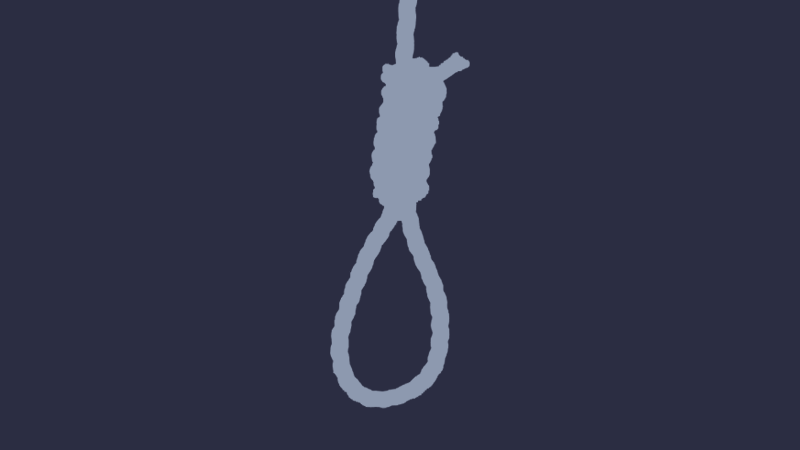05 April 2012 :
We head down Kabwe Road, the road which goes from the capital of Zambia, Lusaka, to Tanzania on our way to the maximum security prison of Mukobeko. A hundred kilometres of gray asphalt crossing the flat red-earthed terrain flanked every so often by giacaramba, splendid long-branched trees strewn with purple flowers which seem as if they’ve captured wispy-coloured clouds.The driver explains that “kabwe” means pebble, probably in memory of the mining operations of lead, zinc and copper started up in the early nineteen-hundreds by the British, the discards of which were dumped on the land and thrown into the water without regulation. The city of the same name, fallen into ruin with the closing of the mines, is one of the most polluted places on earth.
The decay is palpable as we turn onto a dirt road that brings us directly to the maximum security penitentiary: a kind of little fortress built in the 50s with white walls and a large wooden door that I try to photograph even before I get out of the car, causing a stir among the officials.
Unlike my travel companions, Radical Party Senator Marco Perduca and Mariarita Levato of the Italian Embassy, this is the second time I pass this threshold beyond which lies a mass of humanity and a locus of suffering unseen by the world. I visited Mukobeko in 2004 on another mission for Hands Off Cain, but without being able to visit those inmates condemned to death. This time we were authorized to visit death row, already a sign of some change in this Nation.
Black lettering above the door indicates the office of the officer in charge, a small square room with a desk for the chief and a blackboard hanging on the wall with numbers referring to the daily suffering in this complex built by the British over half a century ago. The regulation capacity, around 400 at that time, has been eclipsed as the number of inmates has grown to 1,771, huddled into two dormitories and a death row: 1,159 with definitive sentences and 236 awaiting judgement, 104 condemned to life imprisonment and 271 condemned to death, 2 with commuted sentences. Overcrowding afflicts all the Nation’s prisons, 53 buildings built during the colonial period to house 5,000 people, which, today, “tolerate” the presence of 16,000 inmates. The 1,800 penitentiary officials serving throughout the Country are absolutely insufficient and impotent in the face of the catastrophic condition of Zambian prisons. Under such conditions of poor hygiene and promiscuity in these dilapidated structures, diseases like malaria, tuberculosis, scabies and AIDS reign freely and without forgiveness.
To somewhat alleviate the amount of pain and suffering in the prisons, recent Presidents have called for periodic commutations of sentences. Above all, Levy Mwanawasa, the kindest President in Zambia’s history. Baptist Christian with abolitionist sentiments, during his term, he refused to sign execution decrees and commuted the sentences of numerous inmates condemned to death. “The death penalty is against my principles and I absolutely want to abolish it,” he said as soon as he was elected. “You cannot be slaughtering people like chickens, and I will not sign any death warrant for as long as I remain President. I don’t want to be the boss of the executioners.” The last large scale act of clemency by President Mwanawasa was in August of 2007, when he freed 823 inmates and commuted the death sentences of 97 prisoners to life imprisonment, easing the overcrowding a bit in several of the Nation’s prisons. Furthermore, he empowered the authorities of the prisons to liberate inmates on the basis of good conduct, as well as those who were most gravely ill.
We leave the blackboard room and, passing through a blue-painted passageway, we go through a large gate into an open area, where we pass through another smaller gate into a sunny space the size of a football field. In the middle of this courtyard, some inmates play soccer, kicking up so much dust which in the blinding light becomes a thick fog through which can be seen crowds of inmates on the sides of the field. Along the perimeter fence are a series of buildings. The first is a tiny one-story building which should serve as the clinic as testified by some writing on the wall. “It’s closed at the moment,” the guards tell us and we don’t insist on seeing it.
On the opposite side of the entryway are two blocks of dormitories, one-story buildings comprised of six large rooms split in half by a long dark corridor. We enter the first and the turquoise coloured walls create a stark contrast to the harsh reality of the prison. The stench of urine and excrement assaults us to the point of nausea. The silence is absolute on the cellblock, emptied out in a vain attempt before our visit to make it more presentable. In a large rectangular room about 10 by 5 meters are a disproportionate number of mattresses. Above the turquoise and the white-turned-gray of the walls is another strip higher up of brown, which, upon closer inspection, is a mass of cockroaches. The toilet at the back of the room is a cubby-hole of about two square meters with a hole in the floor and a faucet on the wall under which stands a red plastic bucket full of gray foamy water to serve as a flush.
We are told that 51 inmates sleep in this room. Its seems to me a challenge to the laws of physics that can only be won nightly by a perfect arrangement of bodies forced, in order to occupy less space, to lay on their sides head to foot.
When we come back out into the open, some inmates not engulfed in the dust of the game are huddled around large rocks on which they have placed various animal parts to dry: small fish, wings of an unidentified flying creature, innards, insects and other mouthfuls of miserable food brought to them by relatives during visiting days.
We move onto the area of the workshops and the kitchen. In the computer room, almost in darkness, six computers and four printers sit atop wooden tables consumed by time. There are two young men intent on writing. The kitchen is a large room with better lighting with four large steel boilers. It is here where the main, and we fear, only meal of the inmates is prepared at Mukobeko: a kind of tapioca-based polenta or beans, rice and fried fish. Some inmates are cleaning the floors and when we leave we see the soap-less water run along the exterior wall of the building.
A little further on, through an opening in a metal fence, we step into the maximum security area of the prison, a two-story building composed of two cellblocks separated by an internal courtyard. This area also holds those inmates condemned to death.
Each holding area has twelve cells with a catwalk that runs along the second floor. Each cell is generally only two and a half meters by two meters, designed to host one or two inmates. This suggests a population of 48 to a maximum of 96 people. However, the death row population at this time in Mukobeko is 271, so there are around five or six inmates per cell sharing two mattresses. In the first tiny cell, the two mattresses on the floor just fit the length of the cell and the inmates we meet tell us bitterly that even in the larger cells the situation is proportionately the same if not worse. There are no hygienic facilities or ventilation units. “We improvise latrines by cutting plastics containers of two and a half or five litres for our needs. It’s traumatic.” Death row inmates are allowed to leave their cells, but the space at their disposition is only three meters wide by thirty meters in length.
In the dirt courtyard between the two blocks is a rivulet of putrid water that accompanies us to the exit from this hell on earth.
In the office of the official on duty where we drop in to say goodbye, we find Herman Mvola, a 54 year-old, accused in 1985 of murder and imprisoned in 1987. He tells us his story in a hushed voice. In almost a quarter century at Mukobeko, he has seen 26 fellow inmates go to the gallows: 18 in 1989 when Kenneth Kaunda was still at the country’s helm, the founding father of the country after Independence; the other 8 were all hanged on the same day in January of 1997 under President Frederick Chiluba. Then came Mwanawasa and the gallows closed. Mvola’s sentence was commuted to life imprisonment along with others in 2005 and he is still grateful for the mercy he received. Even though the kind President is gone, he has high hopes in a definitive release, placing his fortune in the hands of successor Rupiah Banda, who, up to now, has followed the same line of justice tempered by clemency.
Far from the maximum security prison, we meet Peter Kunda, a man who spent 27 years in the shadow of the gallows of Mukobeko until 21 November 2007 when he was pardoned by the President. Now he speaks out passionately against the death penalty: “no criminal, no matter how calloused, deserves to be hanged.” He continues, “We got our Law from our colonial teachers. But our old colonizers didn’t hang people in their own Countries. Why should we continue to do so?”
All the parliament members we met during our European Union sponsored mission expressed their personal disaccord with the death penalty, but public opinion holds a different sway. A constitutional review has been underway for years which, after extensive consultations in the country, have determined an orientation towards maintaining the practice. It is now up to Parliament to present a definitive text of the new fundamental charter, which is then to be brought to public referendum.
I don’t know if and when Zambia will abolish the death penalty. I just know that we Europeans, who, during the colonial period, also exported to Africa the “civilisation” of corporal punishment and the gallows entirely unknown on the continent, now, have a duty to help the African people to get rid of those punishments and those gallows. To liberate Africa, not only from the death penalty but from a life passed at the outer limits of humanity in prisons like that of Mukobeko.








